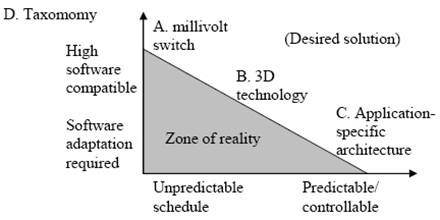 |
 |
 |
 |
 Помощь Помощь
 Поиск Поиск
 Участники Участники
 Календарь Календарь
 Новости Новости
|
 Учебные Материалы Учебные Материалы
 ВАЛтест ВАЛтест
 Фотогалерея Фотогалерея
|
 Правила форума Правила форума
 Виртуальные тренажеры Виртуальные тренажеры
 Мемуары Мемуары
|
| Здравствуйте Гость ( Вход | Регистрация ) | Выслать повторно письмо для активации |
   |
| VAL |
Дата 17.01.2016 23:49
|
||||||
Offline Мэтр, проФАН любви... proFAN of love      Профиль Группа: Администраторы Сообщений: 38060 Пользователь №: 1 Регистрация: 6.03.2004 |
Three Scenarios for the Evolution of Exascale Computing (2015) Источники: - https://www.rdworldonline.com/three-scenari...cale-computing/ - http://www.scientificcomputing.com/blogs/2...scale-computing Автор: Erik DeBenedictis
Присоединённое изображение  -------------------- |
||||||
| VAL |
Дата 6.02.2020 10:19
|
Offline Мэтр, проФАН любви... proFAN of love      Профиль Группа: Администраторы Сообщений: 38060 Пользователь №: 1 Регистрация: 6.03.2004 |
:doh:
-------------------- |
1 Пользователей читают эту тему (1 Гостей и 0 Скрытых Пользователей)
0 Пользователей:
 |
   |
Powered by Invision Power Board(U) v1.3 Final © 2003 IPS, Inc.
Установка, модификация и поддержка:
Barsum | 1px Design Group & Xac | OппаRU форум
Установка, модификация и поддержка:
Barsum | 1px Design Group & Xac | OппаRU форум





